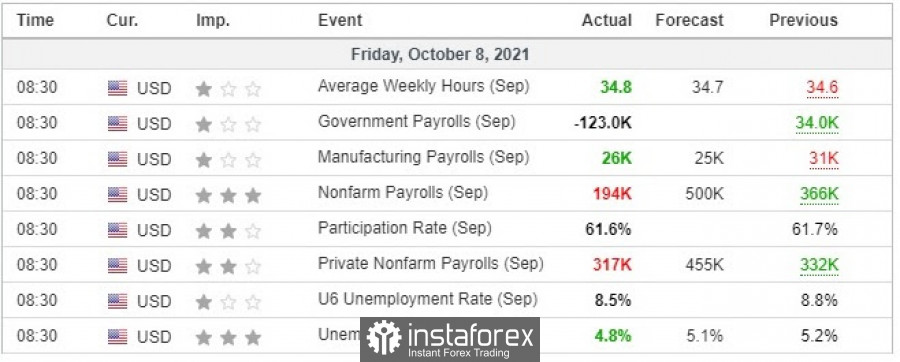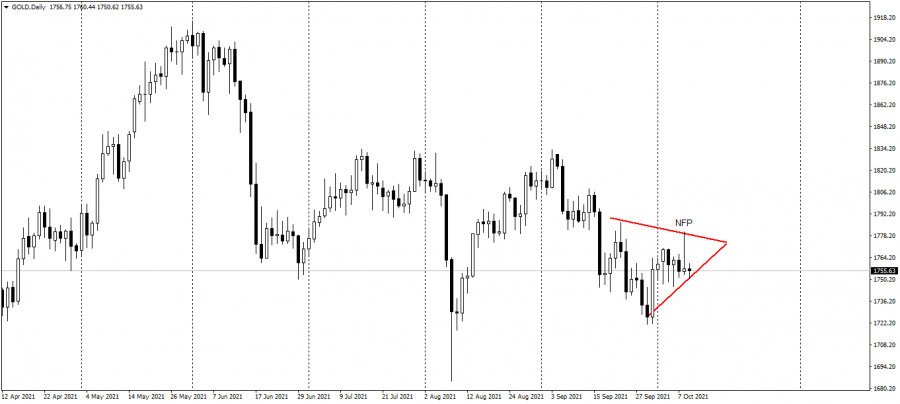
Gold did not rally despite disappointing data on the US labor market.

Obviously, analysts were incorrect with their economic forecasts.

But even though gold briefly hit a two-week high, it was unable to break through $ 1,780.

It seems that investors are still focused on US monetary policy, ignoring the September data on nonfarm payrolls. Many already expected this because the report would do very little on changing the Fed's stance on bond tapering. The central bank is set on reducing its monthly purchases by the end of the year, not to mention changing its monetary policy.
Ongoing inflationary pressures also hinder any rally in the gold market. There is also a global energy crisis, which pushes oil and gas prices to multi-year highs. This makes analysts speculate that inflationary pressures will be much more severe than central banks expect.
As such, market participants evaluate more aggressive actions by central banks.
But before all gold investors start liquidating their assets, it wouldn't hurt to note that anything could happen in the next 12 months. There is a chance that markets are just overestimating the aggressiveness of the Fed and other central banks when it comes to tightening interest rates.
In fact, Jefferies Group said gold prices could rise to $ 5,500 in the long term, explaining that it will be easier for central banks to pursue unconventional monetary policies than to get out of them.
Bloomberg analysts are also optimistic about gold, as one strategist - Mike McGlone - said the yellow metal will soon return to its peak.
The material has been provided by InstaForex Company - www.instaforex.com